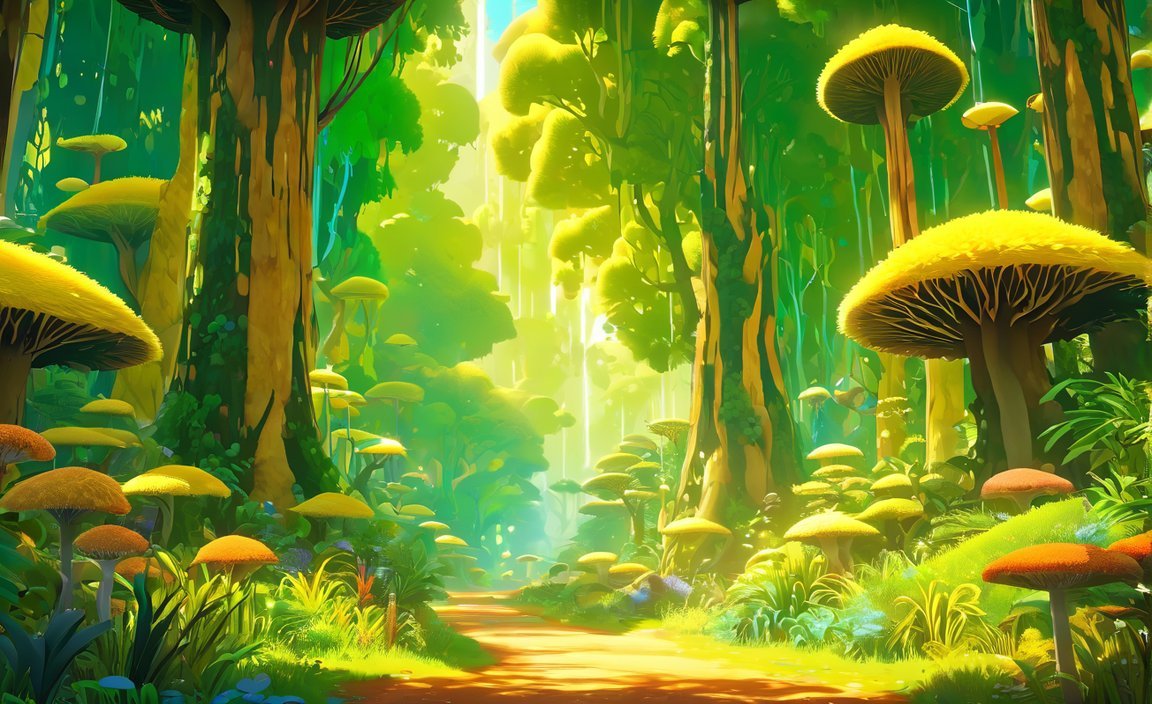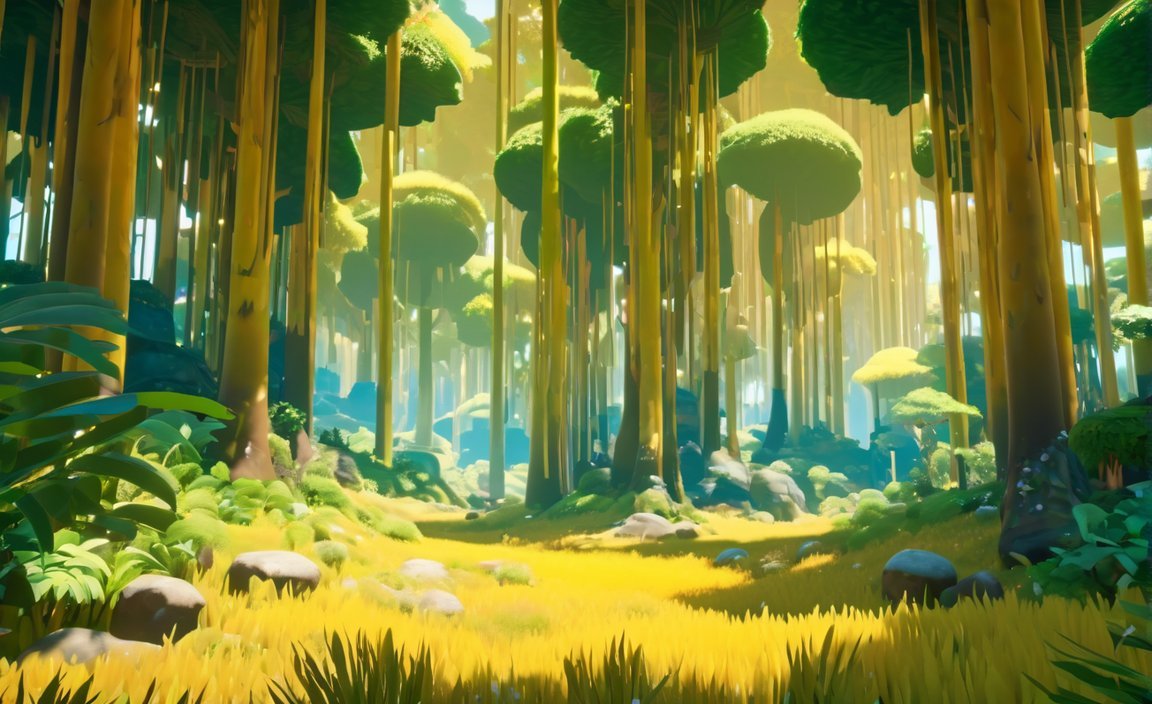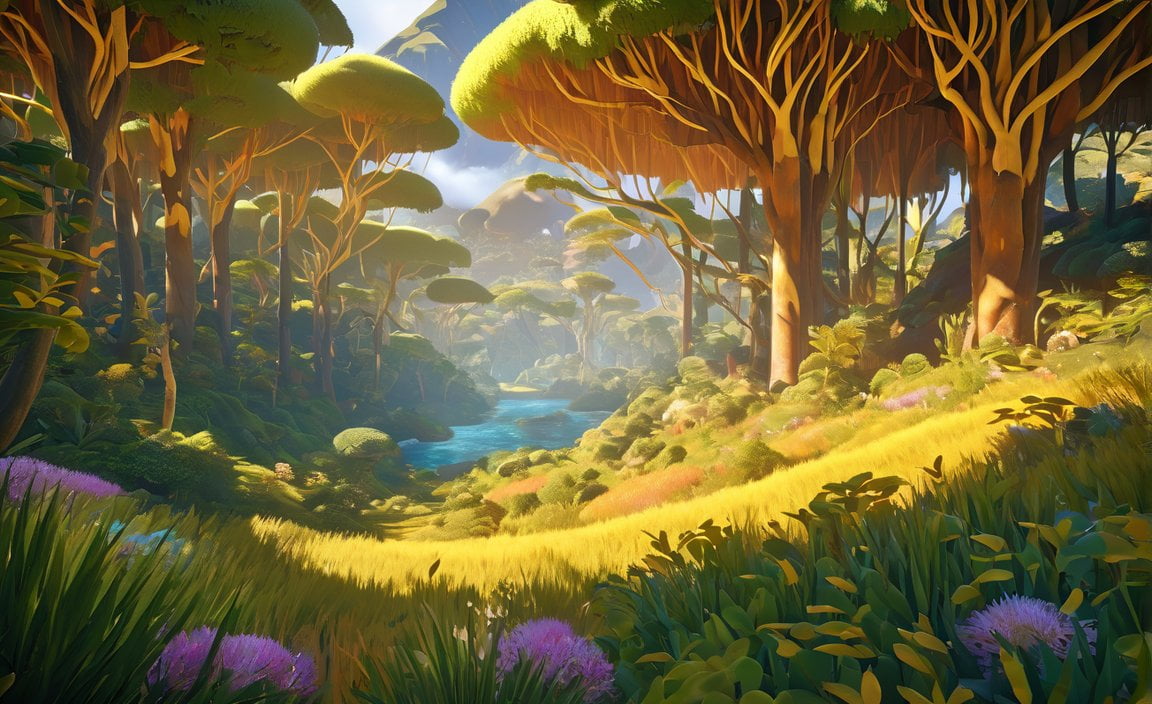New Zealand’s diverse biomes hold a myriad of treasures waiting to be discovered. From temperate forests to marine habitats, alpine landscapes to grasslands, this stunning island nation is a haven for biodiversity and conservation. In this article, we delve into the beauty and importance of New Zealand’s biomes, exploring the intricate interplay between climate, geology, and flora/fauna that make each one unique. Join us on a journey as we unveil the wonders of New Zealand’s diverse biomes and discover their significance for the present and future generations.

Key Takeaways:
- New Zealand has several distinct biomes, including temperate broadleaf and mixed forest, montane grasslands and shrublands, subantarctic islands tundra, and Chatham Islands temperate forest.
- These biomes support a diverse range of flora and fauna, including endemic species that have evolved in isolation.
- The temperate broadleaf and mixed forests cover a significant portion of the main islands and serve as a habitat for various exotic plants and animals.
- Montane grasslands and shrublands can be found in high-altitude areas above the tree line.
- The subantarctic islands tundra, located south of New Zealand, is characterized by harsh conditions with low vegetation due to cold and windy weather.
- The Chatham Islands temperate forest, situated east of New Zealand, is a unique biome featuring endemic plants and animals.
- These biomes contribute to the beauty and importance of New Zealand’s environment, emphasizing the need for their protection and preservation.
- Sources used for this article include the William Murdoch School’s New Zealand Climate report and the New Zealand Climate Report’s biomes page.
All of New Zealand’s Biomes
New Zealand, a land of breathtaking landscapes and unique biodiversity, is home to a fascinating array of biomes that are scattered across its islands. These diverse ecosystems have evolved in isolation, resulting in the existence of numerous endemic species found nowhere else on Earth. From the temperate broadleaf and mixed forests that dominate the main islands to the subantarctic islands tundra south of New Zealand, each of these biomes holds a distinct charm and ecological importance.
Temperate Broadleaf and Mixed Forests
Covering the majority of the main islands, New Zealand’s temperate broadleaf and mixed forests are a majestic sight to behold. These lush and verdant biomes provide a haven for an incredible range of both native and introduced plants and animals. The interplay between native species and exotic invaders has shaped these forests, creating a unique blend of biodiversity.
Montane Grasslands and Shrublands
Above the treeline, nestled in the high-altitude areas, lie the montane grasslands and shrublands of New Zealand. These biomes offer a striking contrast to the forests below, characterized by wide open spaces and low-growing vegetation. Adapted to harsh conditions, the flora and fauna of these highland realms have developed remarkable strategies to flourish in the rugged alpine environment.
Subantarctic Islands Tundra
Venturing south of New Zealand, we find ourselves in the realm of the subantarctic islands tundra. These remote islands, battered by cold winds and subject to harsh weather, provide an invaluable habitat for unique species that have adapted to these extreme conditions. Low-growing vegetation, including mosses and lichens, dominate the landscape, lending an otherworldly feel to these wind-swept islands.
Chatham Islands Temperate Forest
Off the eastern coast of New Zealand lies a hidden gem, the Chatham Islands temperate forest. This distinctive biome is characterized by its isolation, resulting in a rich tapestry of endemic plants and animals found nowhere else in the world. The forest exhibits a remarkable diversity, showcasing the resilience and adaptability of life even in the most remote corners of our planet.
Exploring the Wonders of New Zealand’s Biomes
New Zealand’s biomes, each with its own unique characteristics and inhabitants, illuminate the rich tapestry of life on our planet. Exploring these diverse ecosystems allows us to witness the intricate interplay between climate, geology, and flora and fauna. From the enchanting forests to the rugged alpine landscapes, every corner of New Zealand holds a multitude of stories waiting to be discovered.
Preserving the beauty and importance of these biomes is crucial for the well-being of both the local ecosystems and the global community. By understanding and appreciating the delicate balance within these ecosystems, we can work towards sustainable practices and conservation efforts that will safeguard the incredible biodiversity of New Zealand’s biomes for future generations to come.
Table:
| Biome | Location | Key Characteristics |
|---|---|---|
| Temperate Broadleaf and Mixed Forests | Main islands of New Zealand | Lush, diverse vegetation; support for native and exotic species |
| Montane Grasslands and Shrublands | High-altitude areas above the treeline | Wide open spaces; low-growing vegetation; rugged alpine environment |
| Subantarctic Islands Tundra | Four island groups south of New Zealand | Cold, windy conditions; low-lying vegetation; extreme isolation |
| Chatham Islands Temperate Forest | Chatham Islands east of New Zealand | Unique endemic plants and animals; remote and isolated location |
Here are some captivating facts and information about various topics you might find interesting:
- Did you know there are 10 fascinating facts about Britain? Discover them here.
- Ontario, Canada holds some amazing secrets! Check out these 10 fun facts about Ontario Canada here.
- Christmas in Italy is full of enchantment, and here are 10 fun facts about it to make you merry. Read more here.
- Curious about the coordinates of Christ the Redeemer in Rio de Janeiro, Brazil? Find out the exact location here!
- Looking for some cheesy geographical pick-up lines? We’ve got you covered. Check them out here!
- If you’re in the mood for some sweet and clever geographical pick-up lines, look no further. Find them here!
- Get ready to impress with these National Geographic pick-up lines. Discover them here!
- Wondering if Rio de Janeiro is a dangerous city? Find out more here.
- Can you name all of New Zealand’s biomes? Test your knowledge here.
Diving into the Marine Habitats Around New Zealand
New Zealand is renowned for its stunning marine biodiversity, attracting divers from all over the world. The country’s unique geography, isolation, and temperature variations create a diverse range of marine habitats that support a multitude of species. In this article, we will delve into the wonders of New Zealand’s marine ecosystems and explore the importance of conserving these precious habitats.
Key Takeaways:
- New Zealand’s marine biodiversity is exceptional, thanks to its geographic position, temperature variations, and isolation.
- The country’s Exclusive Economic Zone (EEZ) covers a vast area of 4.2 million square kilometers, providing ample space for diverse marine life.
- Shallow coastal waters have been extensively studied, but much remains to be explored in the deep ocean.
- New Zealand offers several popular diving spots, including the Poor Knights Islands Marine Reserve, Aramoana Mole, Goat Island Marine Reserve, the Bay of Islands, and the HMNZS Canterbury wreck dive.
- Protecting and conserving marine habitats is crucial for preserving the unique species and ecosystems that thrive within New Zealand’s waters.
New Zealand’s marine biodiversity is a result of its favorable location and unique oceanic currents. The country’s coastal waters experience a significant temperature difference of 6°C, which allows for the coexistence of subtropical and subantarctic marine species. This temperature variation, combined with different ocean currents, creates diverse habitats that support an abundance of marine life.
To explore the marine wonders of New Zealand, there are several exceptional diving locations worth mentioning. One of the most renowned spots is the Poor Knights Islands Marine Reserve, located off the Tutukaka Coast in Northland. This reserve is often ranked as one of the world’s top diving locations, offering vibrant underwater landscapes and a myriad of marine species.
In Dunedin, Aramoana Mole provides divers with an opportunity to witness the unique marine life that inhabits the area. From colorful fish to fascinating invertebrates, Aramoana Mole offers an unforgettable experience for underwater enthusiasts.
Goat Island Marine Reserve, situated near Auckland, is another popular destination for divers. This reserve showcases the incredible diversity of New Zealand’s marine ecosystems, including kelp forests, rocky reefs, and sandy seafloors. Exploring the underwater world of Goat Island is like stepping into a vibrant and intricate mosaic of life.
The Bay of Islands, with its crystal-clear waters and scenic landscapes, is a must-visit for divers. This region offers various diving sites, each presenting a unique array of marine species and stunning underwater vistas.
For wreck diving enthusiasts, the HMNZS Canterbury wreck dive in the Bay of Islands is a perfect choice. This sunken naval ship has transformed into an artificial reef, attracting a plethora of marine life. Exploring the HMNZS Canterbury allows divers to witness the fascinating process of nature reclaiming a man-made structure.
In conclusion, New Zealand’s marine habitats are teeming with extraordinary biodiversity due to its geographic position, temperature variations, and isolation. Diving into the marine wonders of New Zealand allows us to witness the beauty and importance of these ecosystems firsthand. It is crucial that we protect and conserve these habitats to ensure the preservation of the diverse species and ecosystems that call New Zealand’s waters home.
Sources:
– Department of Conservation – New Zealand’s marine biodiversity: Marine and coastal conservation
– DivingCorner – Top 22 Best Scuba Diving Spots in New Zealand
Unveiling the Beauty of New Zealand’s Alpine Landscapes
New Zealand’s alpine landscapes are truly breathtaking, filled with towering peaks, snow-capped mountains, and crystal-clear lakes. In this article, we will delve into the charm and importance of these remarkable natural environments.
The Majesty of New Zealand’s Alpine Zone
The alpine zone in New Zealand is a captivating region that stretches between the upper limit of trees and the lower limit of permanent snow. Encompassing approximately 11% of the country, this area offers a unique and diverse natural habitat that is worth exploring.
With its distinctive geography, New Zealand’s South Island boasts a higher concentration of alpine areas and peaks compared to the North Island. The majestic landscapes of the South Island have even been showcased in the Lord of the Rings films, capturing the hearts of moviegoers around the world.
Diverse Landscapes to Discover
When it comes to natural wonders, New Zealand does not disappoint. The country’s landscapes are known for their incredible diversity—sparkling lakes, lush green forests, and easily accessible walking trails await nature enthusiasts and adventure seekers.
Imagine immersing yourself in the serenity of a picturesque lake, surrounded by magnificent alpine peaks. The sheer beauty of these landscapes is enough to leave you in awe, and the easily accessible walking trails allow you to fully embrace and appreciate the natural surroundings.
Notable Natural Landscapes
New Zealand is home to several natural landscapes that truly stand out for their beauty and uniqueness. Let’s take a quick look at a few of these remarkable locations:
- Doubtful Sound: This breathtaking fiord in Fiordland National Park impresses visitors with its tranquil waters, lush rainforests, and cascading waterfalls. It is a haven for wildlife, offering glimpses of dolphins, seals, and penguins.
- Piha Beach: Located on the west coast of the North Island, Piha Beach is renowned for its rugged beauty. It is known for its golden sand, impressive surf, and stunning rock formations, making it a popular destination for surfers and nature lovers alike.
- Tongariro National Park: Home to the famous Tongariro Alpine Crossing, this national park showcases the dynamic and volcanic landscapes of New Zealand. From active volcanoes to turquoise lakes and emerald green forests, this UNESCO World Heritage Site is a hiker’s paradise.
- Waitomo Caves: Underground wonders await in the Waitomo Caves, where thousands of glowworms light up the darkness like a starry night. Embark on a boat ride through these enchanting caves and be amazed by the natural luminescence and beauty.
- Aoraki/Mt Cook National Park: Standing as the highest peak in New Zealand, Aoraki/Mt Cook captivates visitors with its snow-capped grandeur. The national park surrounding it is a haven for alpine adventures, including hiking, mountaineering, and stargazing.
Preserving the Alpine Zone
The alpine zone is more than just a sight to behold; it plays a crucial role in New Zealand’s ecosystem and biodiversity. The Department of Conservation actively works to protect and preserve this fragile environment, ensuring that future generations can continue to marvel at its beauty.
New Zealand’s alpine landscapes are not only a testament to the country’s natural wonders but also serve as important habitats for numerous plant and animal species. By preserving these alpine regions, we can help safeguard the delicate balance that exists between climate, geology, and flora/fauna.
Key Takeaways:
- New Zealand’s alpine landscapes offer majestic beauty, with the South Island boasting a higher concentration of alpine areas and peaks compared to the North Island.
- The country’s landscapes are diverse, ranging from sparkling lakes to lush green forests, providing a wide array of natural wonders to explore.
- Notable natural landscapes in New Zealand, such as Doubtful Sound, Piha Beach, Tongariro National Park, Waitomo Caves, and Aoraki/Mt Cook National Park, showcase the stunning beauty of the country.
- The alpine zone plays a crucial role in New Zealand’s ecosystem and biodiversity. It is important to protect and preserve these delicate environments for future generations.
Sources:
– Department of Conservation
– Skyline
Discovering the Unique Grasslands of New Zealand
Native grasslands have played a crucial role in shaping New Zealand’s diverse ecosystems for thousands of years. Spread across approximately 13% of the land, these grasslands have been intertwined with the country’s plant cover and ecology throughout the Holocene period. In this article, we will delve into the beauty and importance of the unique grasslands of New Zealand.
Grasslands: A Mosaic of Nature
The grasslands of New Zealand are not simply vast stretches of open grassy plains but rather a mosaic interspersed with areas of woody vegetation. Dominated by tussocks, these native grasslands provide habitat for a variety of unique plant and animal species. However, it is important to note that many of these areas have undergone significant changes due to human intervention.
The Impact of European Settlers
When European settlers arrived in New Zealand, they transformed many grasslands for farming purposes. Additionally, the burning of native grasses, introduction of exotic grasses, and grazing of animals further altered these ecosystems. As a result, many native grasslands were lost or degraded. Despite these changes, native tussock grasslands remain important for their ecological value and intrinsic beauty.
Conservation Efforts and Ecological Value
Recognizing the ecological value of native tussock grasslands, conservation efforts have been undertaken to protect and preserve these unique ecosystems. The conservation work aims to ensure the survival of valuable native plant species and the maintenance of healthy ecological processes.
It is essential to safeguard native grasslands not only for their beauty but also for the numerous ecological services they provide. These grasslands contribute to water filtration, carbon storage, erosion control, and the preservation of biodiversity. They act as a vital habitat for endemic species, providing them a place to thrive and ensuring their survival.
Sustainable Grassland Management
One of the key aspects of protecting and preserving grasslands is promoting sustainable grassland management practices. This includes the establishment of protected areas, careful grazing management, and the removal of invasive species that threaten the native grasslands.
By adopting sustainable practices, we can maintain the balance between the needs of agricultural activities and the conservation of native grasslands. This approach ensures that future generations can continue to enjoy the splendor and benefits of these unique ecosystems.
Key Takeaways:
- New Zealand’s grasslands, comprising around 13% of the land, have shaped the country’s ecology for thousands of years.
- European settlers significantly altered native grasslands through farming, burning, and the introduction of exotic species.
- Native tussock grasslands have ecological value and are home to unique plant and animal species.
- Conservation efforts aim to protect and preserve these grasslands and their intricate ecological processes.
- Sustainable grassland management practices are crucial for striking a balance between agricultural needs and conservation goals.
Sources:
- Environment Guide – Grasslands
- Te Ara Encyclopedia of New Zealand – Grasslands

FAQ
Q1: What are the typical biomes found in New Zealand?
A1: The typical biomes in New Zealand include temperate broadleaf and mixed forests, montane grasslands and shrublands, subantarctic islands tundra, and Chatham Islands temperate forests.
Q2: What is the unique feature of New Zealand’s biomes?
A2: New Zealand’s biomes support a diverse range of flora and fauna, including endemic species that have evolved in near isolation.
Q3: Where can I find the temperate broadleaf and mixed forests in New Zealand?
A3: The temperate broadleaf and mixed forests cover most of the main islands of New Zealand, providing a habitat for a wide range of exotic plants and animals.
Q4: What are montane grasslands and shrublands?
A4: Montane grasslands and shrublands are high-altitude areas above the tree line in New Zealand. They occur in mountainous regions and are characterized by grasses, low shrubs, and unique alpine vegetation.
Q5: Where can I find the Chatham Islands temperate forest?
A5: The Chatham Islands temperate forest is a unique biome located on the Chatham Islands east of New Zealand. It consists of endemic plants and animals that are found only in this specific area.















